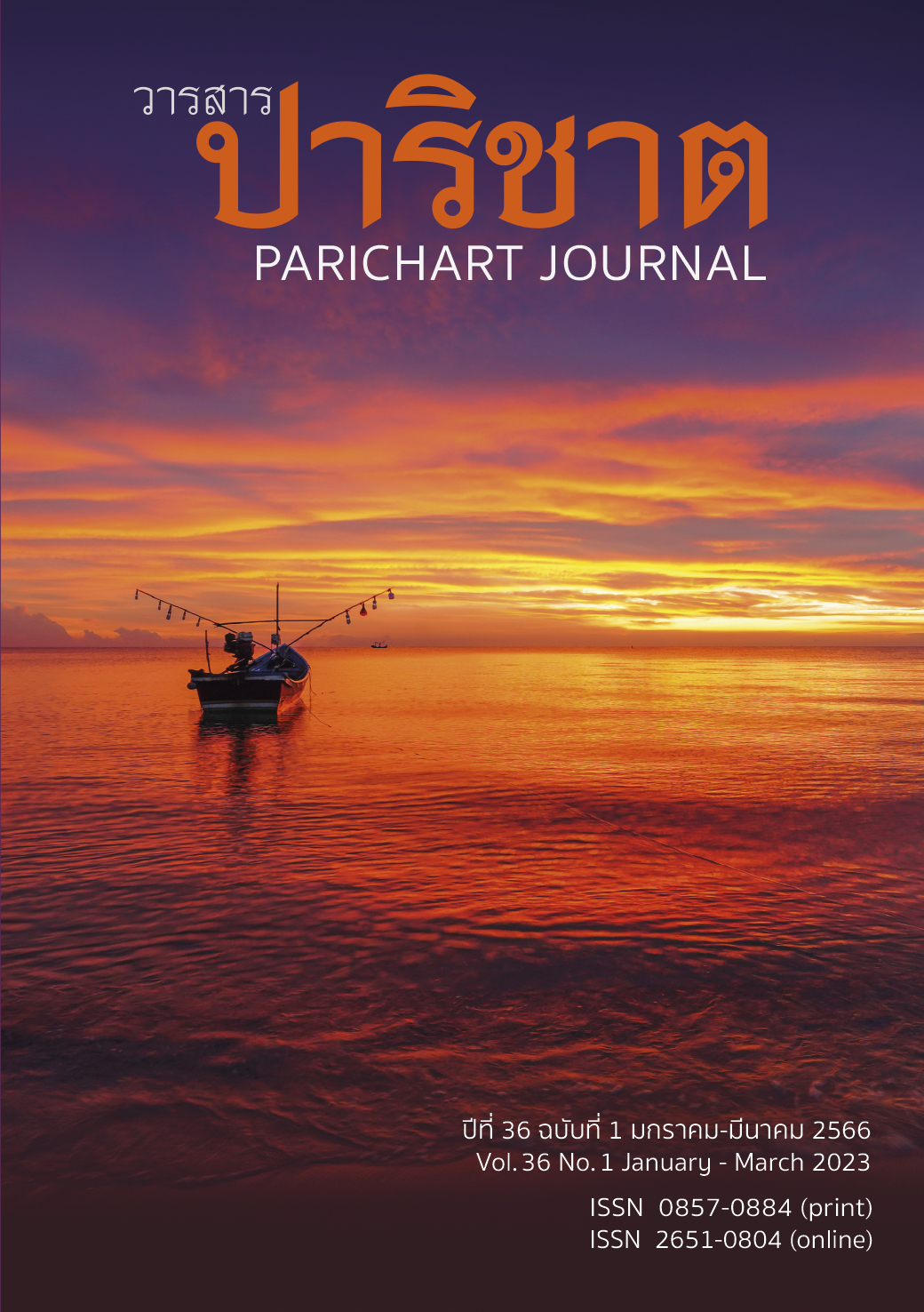Effects of Using the KWL Chart on Fostering EFL University Students’ Critical Reading
Main Article Content
Abstract
The purposes of this study were to investigate the use of the KWL chat in improving university students’ English critical reading comprehension and to investigate how those students processed the KWL chart to activate the use of metacognitive strategies when they studied critical reading. The population was university students majoring in English for Communication, with a total of 120 students. Out of this population, purposive sampling was used to select 27 third-year students as a sample. The data were collected through an English critical reading comprehension test and students’ reflective writing in the KWL chart. The data obtained from pre- and post-test were analyzed by using a pair sample t-test. The reflective writing in the KWL chart was coded and categorized, based on theories of metacognitive strategies. Frequency and percentage were used to analyze the use of metacognitive strategies when the students studied a critical reading course. The results showed that there was a significant difference in the scores for the pre-test (M=19.00, SD=3.53) and post-test (M=34.19, SD = 6.61) condition; t(26) = -17.99, p = (.000). The findings from the students’ reflective writings in the KWL chart revealed that the monitoring strategy was the most frequently used. Students used the monitoring strategy while they were reading and studying a critical reading.
Article Details

This work is licensed under a Creative Commons Attribution-NonCommercial-NoDerivatives 4.0 International License.
References
Nair, P., & Said M. N. E. (2020). The effect of graphic organizer (KWL chart) on young learners’ reading comprehension in an ESL setting. International Journal of Management and Humanities (IJMH), 4(8), 1-11.
Short. K. G., & Harste, J. (1996). Creating classrooms for authors and inquirers. Heinemann.
Chall, J. S. (1983). Stages of reading development. McGraw-Hill.
Risnawati, R., & Lismayanti, D (2014). The effect of using KWL (Know, Want, Learned) strategy on EFL students’ reading comprehension achievement. International Journal of Humanities and Social Science, 4(7), 225-233.
Applegate, M. D., Quinn, K. B., & Applegate, A. J. (1994). Using metacognitive strategies to enhance achievement for at-risk liberal arts college students. Journal of Reading, 38(1), 32-40.
Ehri, L. C. (2020). The science of learning to read words: A case for systematic phonics instruction. Reading Quarterly. 55(S1), S45-S62.
Lynch, M. (2021, 17 February). Reading process: The bottom-up theory. https://www.theedadvocate.org/reading-process-the-bottom-up-theory/
Wallace, C. (2003). Critical reading in language education. Palgrave Macmillan
.
Hartman, J. H. (2009). A guide to reflective practice for new and experienced teachers. McGraw-Hill.
An, S. (2013). Schema theory in reading. Theory and Practice in Language Studies, 3(1), 130-134.
Barashid, M. (2020). Investigating the critical reading skills for Saudi EFL learners through graphic organizers instructional program. Frontiers in Education Technology. 3(4), 30-63.
Ogle, D. (1992). KWL in action: secondary teachers find applications that work. In Reading in the content areas: Improving classroom instruction. (pp. 270-281). Kendull/Hunt.
Usman, B., Fata, I. A., & Pratiwi, R. (2018). Teaching reading through Know-Want-Learned (KWL) strategy: The effects and benefits. Englisia, 6(1), 45-42.
Utami, R., Syarif, H., & Refnaldi. (2014). The effect of Know-Want-Learned (KWL) strategy and students’ reading attitude toward students’ reading speed of hortatory exposition text at grade XI of Sman1 Curup Selatan. Journal English Language Teaching (ELT), 2(1), 24-37.
Fengjuan, Z. (2010). The integration of the Know-Want-Learn (KWL) strategy into English language teaching for non-English majors. Chinese Journal of Applied Linguistics, 33(4), 77-86.
Khaira, U. (2015). The use of know, want to know, and learnt (KWL) strategy to improve reading comprehension. English Education Journal. 6(3), 411-423.
O'Malley, J. M., & Chamot, A. U. (1990). Learning strategies in second language acquisition. Cambridge University Press.
Creswell, J. W. (2014). Research design: qualitative, quantitative, and mixed methods approaches (4th Ed.). SAGE.
Creswell, J. W., & Plano Clark, V. L. (2018). Designing and conducting mixed methods research (3rd Ed.). SAGE Publications, Inc.
Oxford, R. L. (1990). Language learning strategies: What every teacher should know. Heinle & Heinle.
Bachman, L. F., & Palmer, A. S. (1996). Language testing in practice: Designing and developing useful language tests. Oxford: Oxford University Press.


